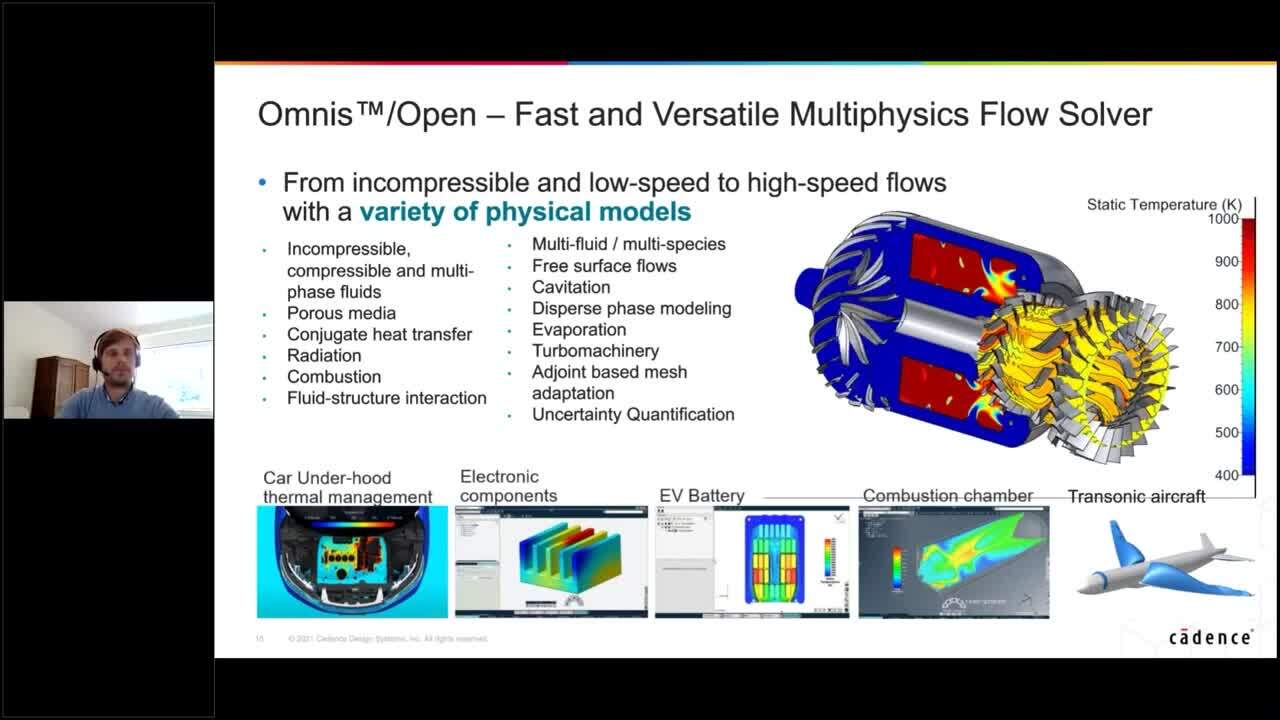Fast and Reliable CFD Simulation of a Plate Counterflow Heat Exchanger

Predicting performance of heat exchangers can be a challenging task. Simplified methods such as the NTU (Number Tranfer Units) method cannot be used without making a series of assumptions first. The use of CFD allows for a much more in-depth and accurate analysis of the flow details. Omnis™ offers a straightforward, easy-to-use mesh and simulation set-up for the analysis of this type of problem.
With Omnis™/Hexpress different regions of the flow can be meshed with surface-to-volume or volume-to-surface techniques, exploiting the advantages of both.
Omnis™/Open-PBS offers a reliable and easy-to-use simulation environment with dedicated co-and post-processing capabilities for Conjugate Heat Transfer (CHT) simulation involving several fluid and solid blocks.
Discover how Cadence's Omnis™ helps in the development of heat exchangers with fast and reliable results. The webinar will present the meshing and simulation of a plate counterflow heat exchanger.
During this webinar you will learn about:
-
Multi-domain meshing, coupling surface-to-volume and volume-to-surface approaches
-
Conjugate Heat Transfer simulation with Omnis™/Open-PBS